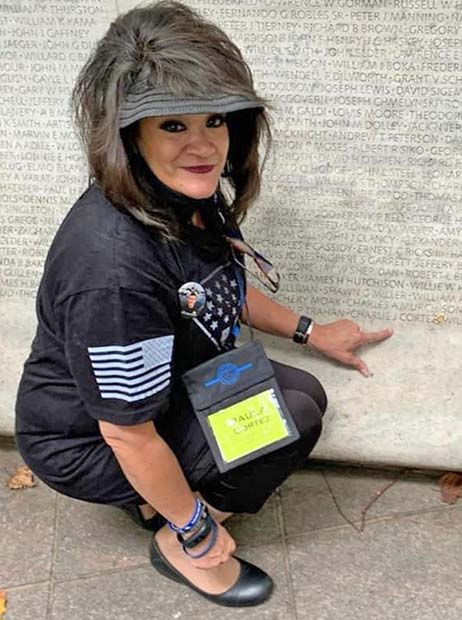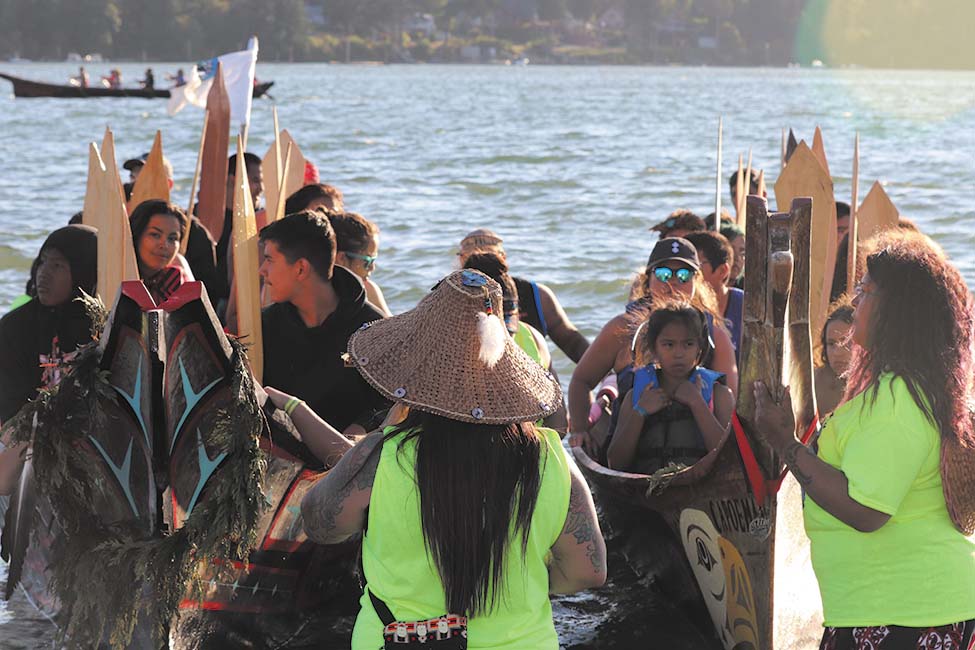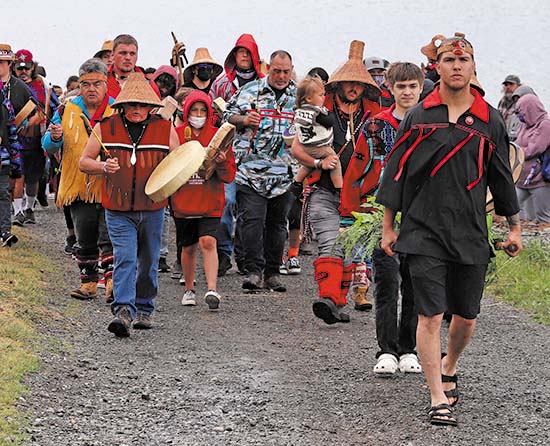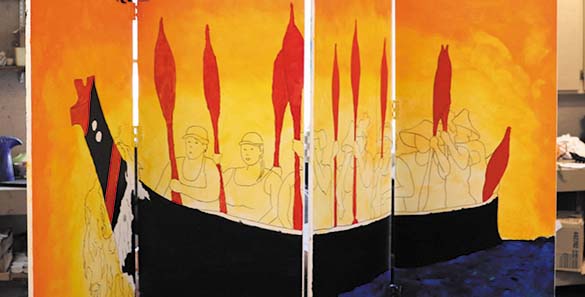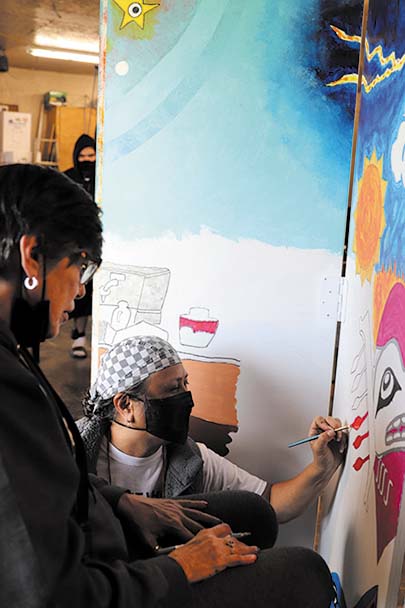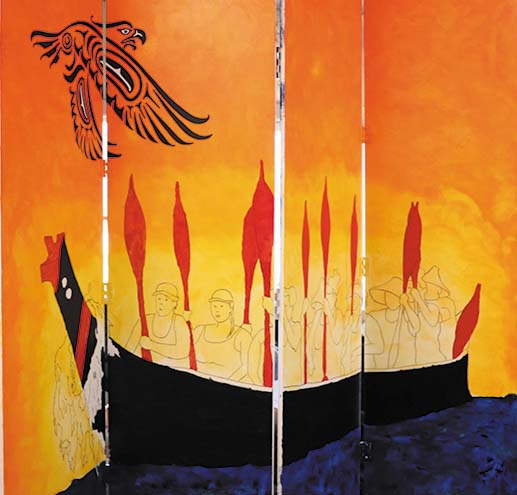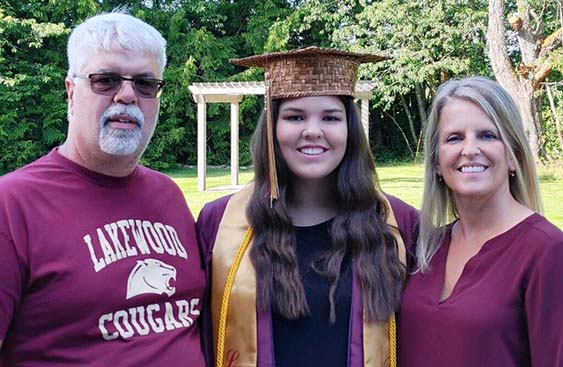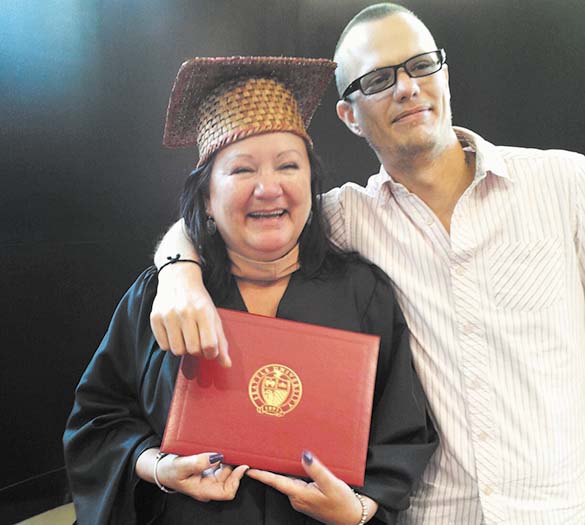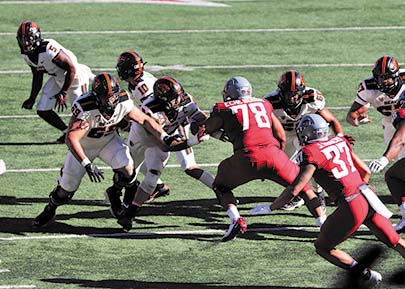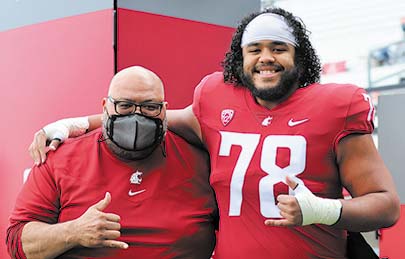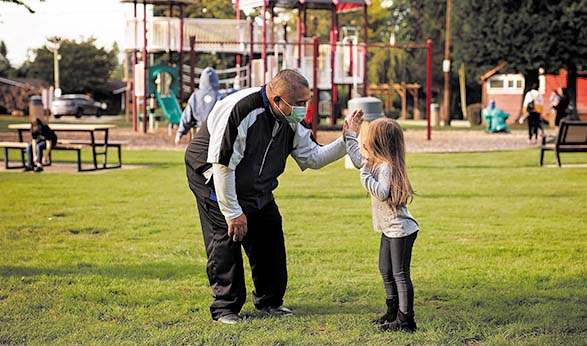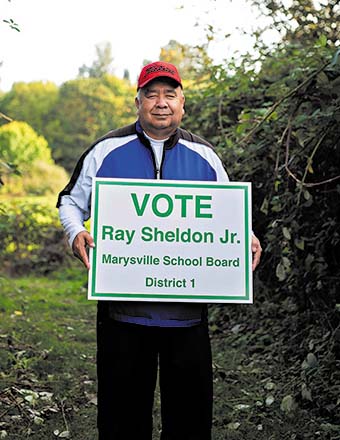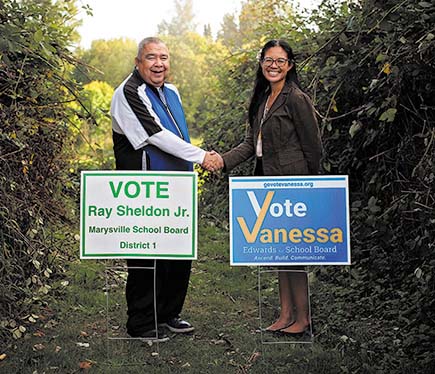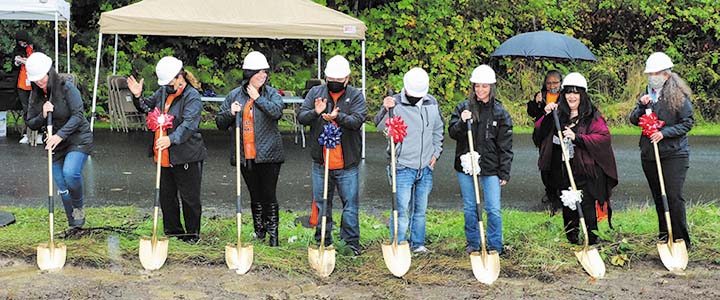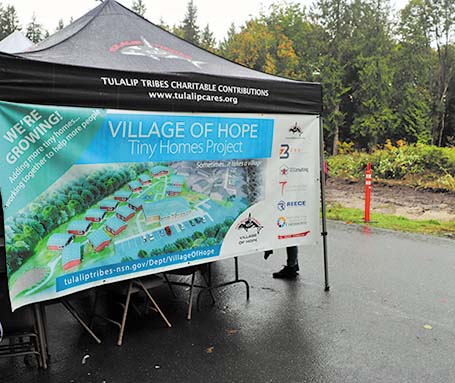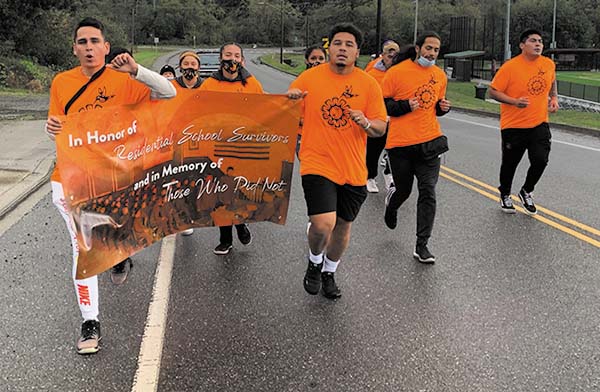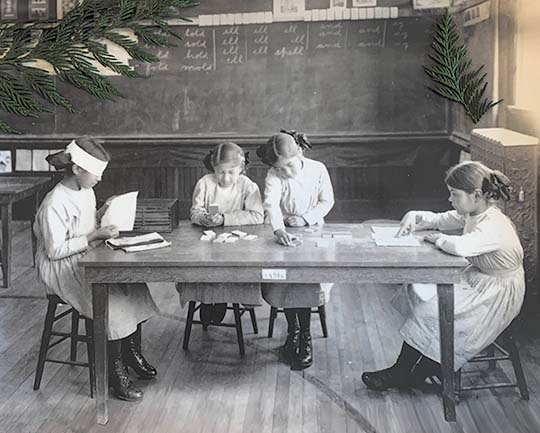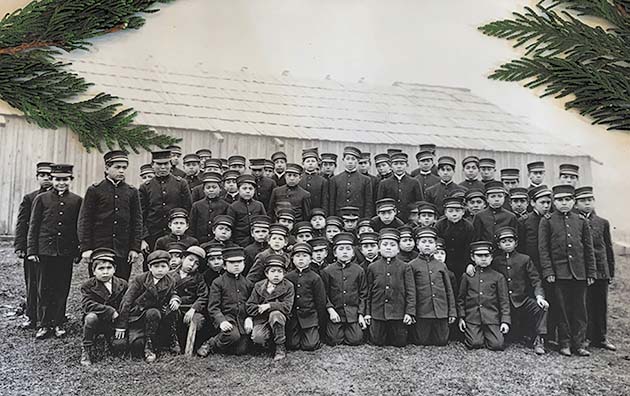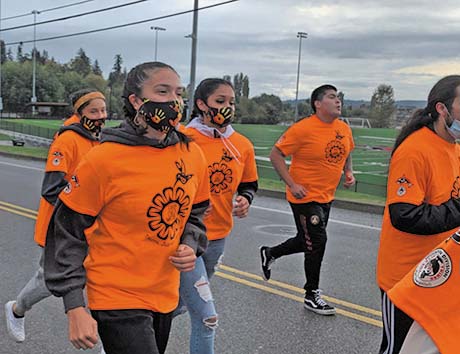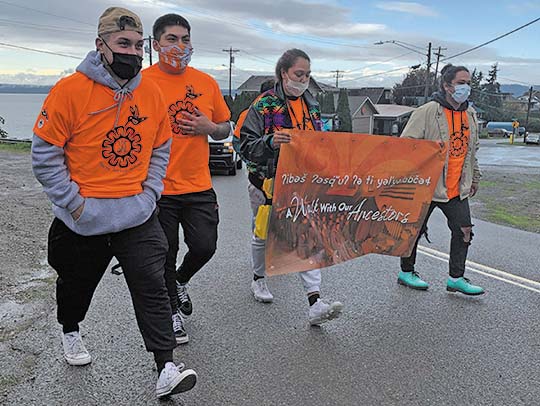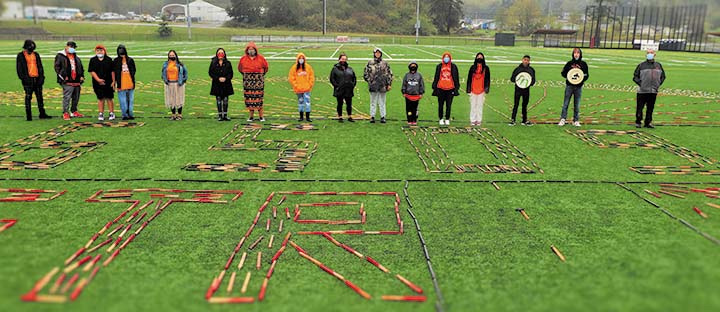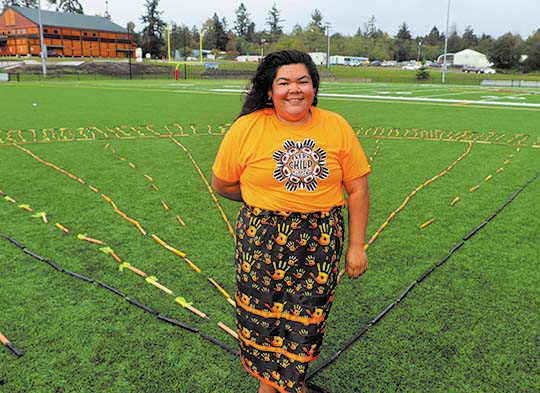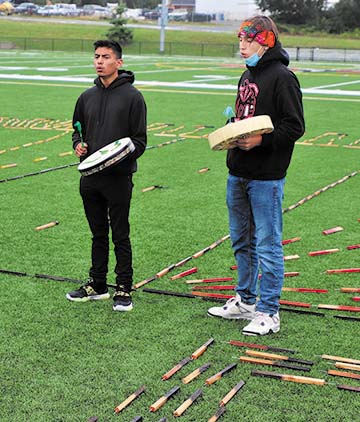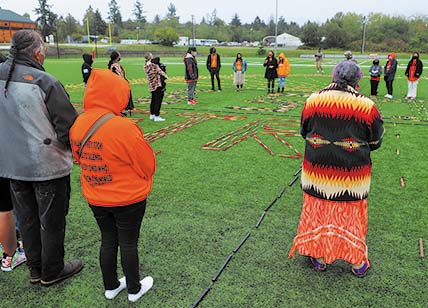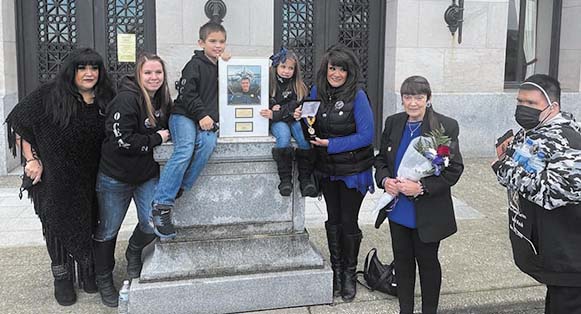
By Kalvin Valdillez, Tulalip News; photos courtesy of Paula Cortez and Teri Nelson
On August 17, the people of Tulalip and the law enforcement community gathered at the Angels of the Winds Arena in Everett to pay their final respects and say their goodbyes to fallen Tulalip Police Officer, Charlie Cortez. A man beloved by the community he vowed to protect and serve, Charlie was pronounced lost at sea nearly a year ago, while he was on duty, shocking the entire nation and breaking the hearts of those who loved him most.
After that night of tragic events, and the following weeks of continuous searching, Charlie’s loved ones were embraced by the law enforcement community, particularly the Behind the Badge Foundation. In the family’s darkest hour, the foundation assured them that he would be honored – and his legacy, that of a hero, would be remembered and shared for years to come. Behind the Badge has kept their promise to the family and over the past several months Charlie’s name has been etched into a number of memorial walls and read aloud during roll call at vigils.
“Behind the Badge is a foundation that supports law enforcement officers and their families in times of critical need,” said Behind the Badge Executive Director, Brian Johnston. “As we began building this foundation, our eyes were opened to so many needs within the law enforcement community and within our family community. Healthy officers and healthy family equal healthy communities. From the response side of trying to support our law enforcement officers and their families in a line of duty death, or even a suicide death or unexpected death, we think it’s very important to continue to build the relationship with the department and the families so they feel supported throughout time.”
The foundation assisted in the planning and execution of the funeral service in August and helped the family with the most recent ceremonies in honor of Charlie, both here in the state of Washington and across the country in Washington D.C.
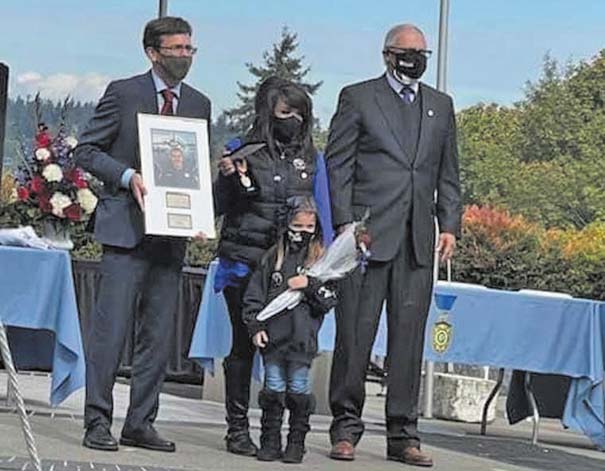
Olympia
On the afternoon of October 8, fourteen officers, from several police agencies across the state, were awarded the medal of honor in front of the Washington State capitol. While most medals were awarded posthumously and accepted on behalf of fallen officers by their families, a handful were awarded to local officers for performing heroic acts while on duty.
The medals were presented by Washington State Governor Jay Inslee and Washington Attorney General Bob Ferguson, who both shared heartfelt sentiments during the ceremony.
Said Governor Inslee, “We know this law enforcement medal recognizes the lives lost in duty and for those who have incredible acts of heroism, which has distinguished them amongst a distinguished profession. We are here today to honor some of the most valued and honorable people in the state of Washington. We are honoring the specific individuals who have dedicated themselves, and some of whom with the ultimate sacrifice.”
Officer Charlie Cortez’s family were in attendance of the special honoring as well as members of the Tulalip Police Department. His mother Paula; his children Dominic and Peyton; their mother Tawnya; his brother Richard (Moochie); and grandmother Sandra proudly accepted the medal. They also visited the Washington State Law Enforcement Wall where Charlie’s name was recently inscribed.
“The ceremony that was in Olympia was for the Medal of Honor for Washington State officers,” reflected Paula Cortez. “To me that symbolized, how Governor Inslee mentioned it, that this Medal of Honor was presented to us by all the citizens of Washington State, in honor of Charlie’s sacrifice, giving his life for protecting others.”
Washington D.C.
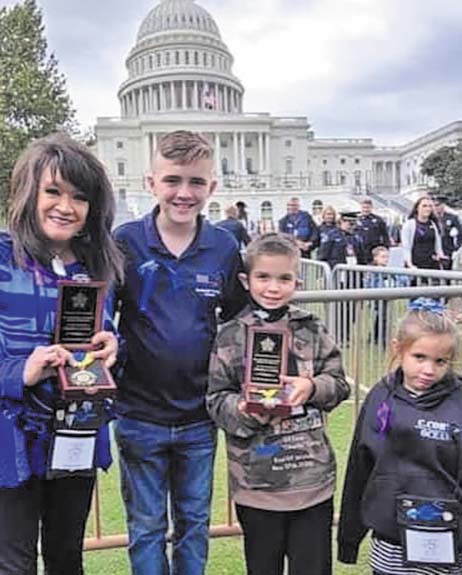
Each May, during the week of the 15th, a special gathering is held in Washington D.C. in remembrance of all the brave men and women throughout the country who paid the ultimate sacrifice while on the line of duty. Known as National Police Week, the four-day tribute brings families of fallen officers together to honor the memory of their loved ones. The event was originally established forty years ago to coincide with National Peace Officers Day, however, due to the worldwide pandemic the 2020 event was cancelled and this year’s event was postponed until October 13-17.
Charlie was one of 434 officers honored during National Police Week. When his family arrived at Washington D.C., they were paid the highest respects and even received a security detail.
Paula stated, “When we flew into Washington D.C., the honor guards greeted us as soon as we got there. Honor guards were saluting us as we were coming through, and we had honor guards assigned to us to help us with our luggage and shuttle. When they brought all the families to the host hotel, they shut down Washington D.C. highways and escorted us to the hotel. It was amazing to see. The overpasses had firemen and officers saluting us as we went by.”
The weeklong event kicked off with the welcoming of the Police Unity Tour participants. In an effort to raise awareness to officers who died in the line of duty, and raise funds for the National Law Enforcement Memorial fund, officers hailing from nine separate police chapters across the country, take part in a four-day bicycle ride from Florham Park, New Jersey to the memorial wall in D.C. The event draws approximately 2,600 participants and volunteers each year and raises over $2 million annually. Each cyclist rides in honor of a fallen officer, wearing bracelets with that officer’s name, police department and end of watch date. Once the rider’s journey is complete, they gift the bracelet to that officer’s family.
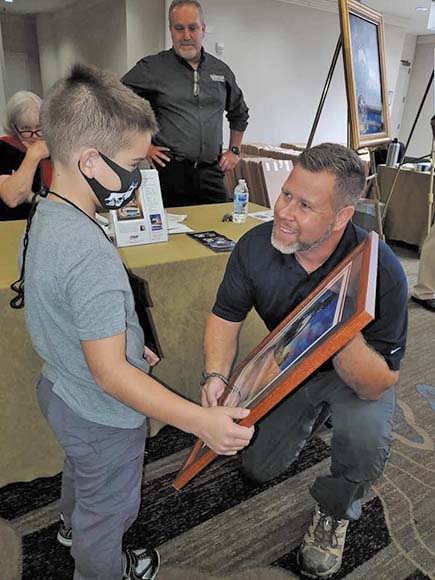
The next event of Police Week occurs at the National Mall and is an emotional and beautiful ceremony. Beginning in the early evening, while there is still plenty of daylight, family members, close friends and fellow officers gather to pay their respects to their fallen heroes. Board members of the National Law Enforcement Memorial Fund share a few remarks before leading roll call. This year, 701 names were read aloud and those same names are now etched on the memorial wall for eternity. When all the names were spoken, the sun had set and each person in attendance lit their candles. This created a gorgeous scene, with hundreds of candles held high in the air as the Washington Monument towered in the background.
“The amount of families that came and gathered was overwhelming,” Paula shared. “You really don’t hear about the number of officers who sacrificed their lives on the line of duty. It was touching. It was emotional. It was everything all wrapped up in one.”
The following day, a conference was held for the survivors of the fallen officers hosted by Concerns of Police Survivors, or COPS. Several seminars were held to help families through this difficult time. During the conference, family members also met others who went through similar tragedies of losing a loved one, and they were able to connect and relate with each other and form new and important friendships.
“It was healing, attending the conferences,” Paula said. “I attended the mother’s conference. It was raw, I mean, we all really shared our experience. At one point, I had to get up and walk out. But then, I found others out in the hall. They did the same thing. There was not a dry eye anywhere I looked. Just then I realized that I am not alone and there are others who feel similar pain over what happened to their child.”
During the same day as the conference, Charlie’s kids attended a camp at a local law enforcement agency where age-appropriate grief counseling sessions took place, as well as a number of fun activities. Paula was happy to report that both Dominic and Peyton had a great time at camp.
The week ended with the Fortieth National Peace Officers Memorial Service where the Medal of Honors were presented to the families. President Joe Biden was the keynote speaker and he shared, “To the families here today, this is all about you. To the families of the fallen, you’ve suffered an enormous loss. But understand, your loss is also America’s loss and your pain is America’s pain. Today, we’re here to remember nearly five hundred of your brothers and sisters, husbands and wives, sons and daughters. We hope you take some comfort in the knowledge that the men and women here assembled today, they’ll always be with you.”
Though his funeral services were held back in August and it’s been eleven months since that terrible stormy night, Tulalip hero Charlie Cortez continues to live on in spirit – in the hearts of his loved ones and in the memories of his fellow brothers and sisters in blue. His name is forever displayed on memorial walls throughout the entire nation. And therefore, his legacy and story of valor will be shared for generations into the future, from Tulalip all the way to Washington D.C.
“Any parent would feel honored to see the recognition that others are giving my son,” Paula expressed. “It was an honor that he was recognized by all these different agencies throughout the country. I’m proud of him. I know he gave his life and he is honorable for that, because he was protecting other people’s property. He dedicated himself to his community and they are recognizing that by making sure nobody forgets him.”
